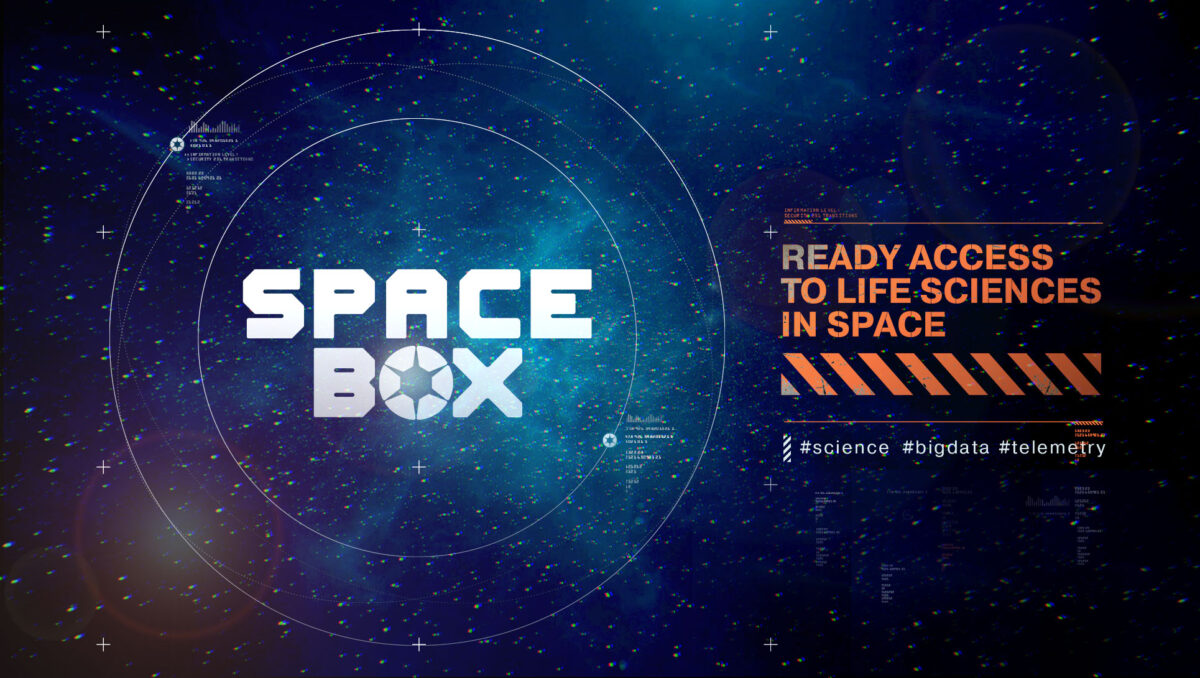Ukrainian researchers are creating an accessible platform for biological experiments in space that can accelerate basic and applied cosmo-biological research and bring us closer to colonizing the Moon and Mars.
We already know a lot about how living organisms are adapted and how ecosystems function. But what happens if they are transplanted beyond their home planet where they evolved over billions of years and placed into orbit around the earth - or on the Moon or Mars? In those alien environments there’s no gravity - or one that differs from earth’s - there’s a different substrate, a different light-cycle with a different spectral composition and there’s no protective earthly magnetic field.
We know incomparably less about such things but must learn much if we are really planning to create permanent colonies on the Moon or Mars. There, only artificial ecosystems can provide inhabitants with food and oxygen over any length of time. So far, biological experiments in space are very expensive undertakings and only a few countries like the United States, China, Russia, Japan and the EU that have developed such a capability can perform them regularly. Other countries are only occasional actors.
Ukrainian scientists have launched SpaceBox – a start-up whose purpose is to make biological research in earth orbit much more accessible for both their colleagues and businesses.
The Ukrainian Nanosatellite 'Workshop'
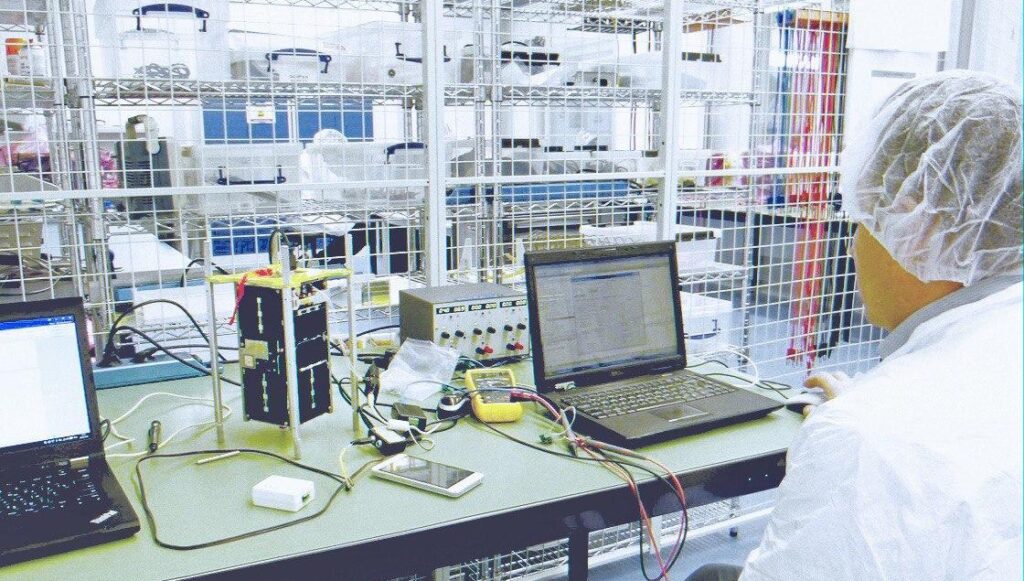
The idea for such a start-up arose in 2014 when a group of scientists at the Igor Sikorsky Kyiv Polytechnic Institute (KPI) was working on creating the first Ukrainian nanosatellite of the CubeSat variety. These are standardized 10 cm cube-shaped spacecraft weighing no more than 1.33 kg. Because of the standardized and compact dimensions, dozens of them can be launched at the same time by rocket or with a specialized instrument on board the International Space Station. Thus, the price of the apparatus and its actual launch are relatively inexpensive – a few hundred thousand dollars depending on installation and the scientific equipment being carried. Obviously, you can’t fit much equipment on this kind of miniature satellite but its dimensions can be increased simply by joining together two, three, six or any number of standard ‘cubes,’ or units.
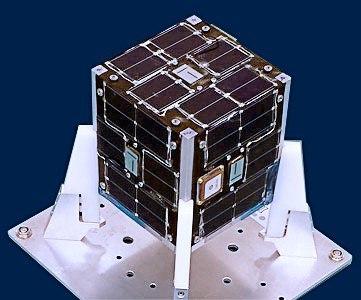
A year later, the PolyITAN-1 nanosatellite built by KPI was successfully launched into earth orbit and continues to send signals back to Earth. This is quite a success story for an apparatus of that kind. Two years afterwards, the PolyITAN-2 began measuring our planet’s thermosphere as part of the international QB50 mission. In the meantime, a scientific team from KPI led by Borys Rassamakin teamed up with colleagues from the M.G. Kholodny Institute of Botany of NAS of Ukraine and other institutions to develop a CubeSat for biological experiments - the PolyITAN-4. (A third satellite of this type is also being developed for remote sensing of the earth.)
An Ecosystem in a Jar
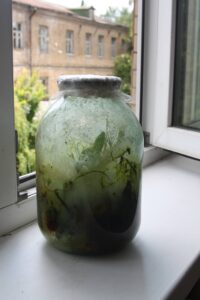 The idea behind the PolyITAN-4 is to place a kind of microcosm inside a triple CubeSat. You can see what this looks like in one of the scientific laboratories of the M.M. Hryshko National Botanical Garden. Here, one or several live plants are being cultivated in hermetically sealed ordinary jars. In addition to the plants there is obviously some moist artificial soil with microorganism. The only external inputs are light and a temperature needed to sustain the samples in the jar. This is a relatively simple model of a natural ecosystem.
The idea behind the PolyITAN-4 is to place a kind of microcosm inside a triple CubeSat. You can see what this looks like in one of the scientific laboratories of the M.M. Hryshko National Botanical Garden. Here, one or several live plants are being cultivated in hermetically sealed ordinary jars. In addition to the plants there is obviously some moist artificial soil with microorganism. The only external inputs are light and a temperature needed to sustain the samples in the jar. This is a relatively simple model of a natural ecosystem.
It’s not easy to ensure that this ecosystem will thrive by itself without human intervention or the introduction of external substances. But researchers at the Institute have had some positive experiences in this regard; like when, for example, one such ecosystem survived in a hermetically sealed three liter jar for more than ten years. Success depends on the features of plant species used and how well or poorly they co-exist, the fungi and bacteria that are found with them in the enclosed space, the substrate, and other factors.
Today, an eight-month experiment consisting of several different microcosms is being completed at the Botanical Garden. Vasyl Brykov, the team leader of PolyITAN-4 biologists, explained how together with his colleagues they tested fifteen species of plants. Initially, a single sample of each one was cultivated in isolated jars and then the team found the three that formed the best coexistent combination in a common environment. The researchers are not yet prepared to reveal the names of these plants. “They seem quite comfortable in this sealed environment,” said Vasyl, “The main effect is their miniaturization, their dimensions being approximately ten times smaller than under normal circumstances.”
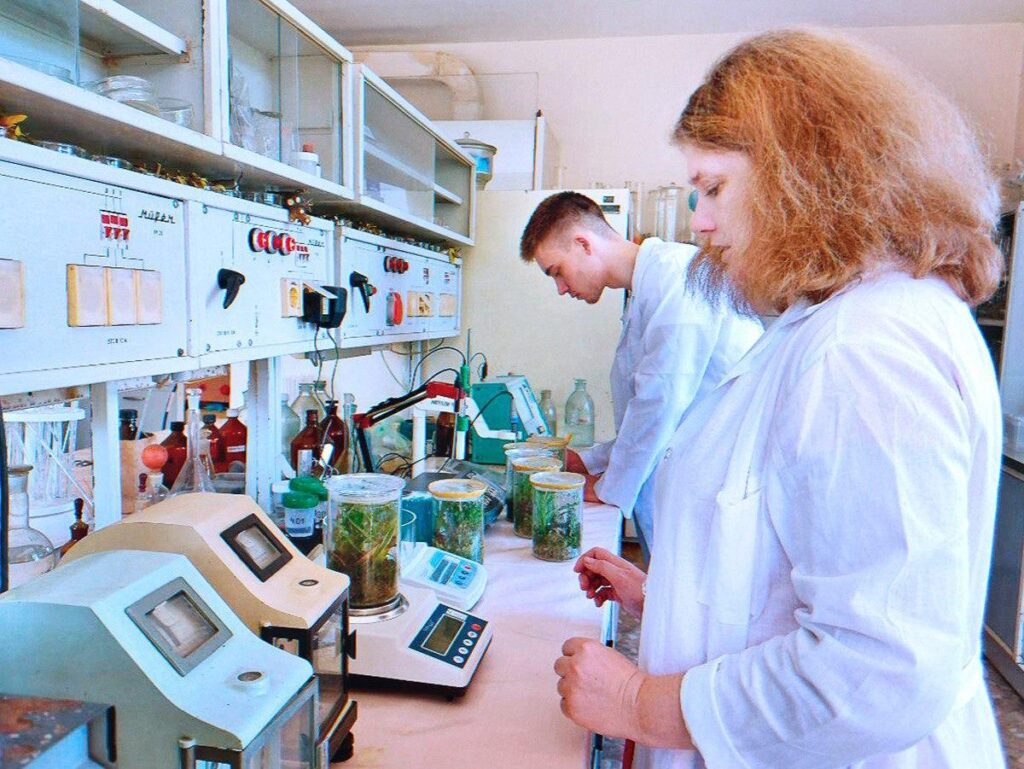
Space Experiment (Orbital flight)
It’s now time to test whether a similar ecosystem will cope as well in earth orbit. Scientists from KPI plan to create a special container that will replace the glass jar on a nanosatellite. Together with the plants and substrate the researchers will fit some red, blue and green LEDs. This will allow them to change the nature of the lighting and indirectly alter the temperature of the internal environment.
Because these satellites are obviously unable to return to earth whole and undamaged the researchers will collect all of the data on the progress of the experiment remotely. All of the containers with live organisms will be fitted with monochrome video cameras and a sensor for measuring CO2 levels. These will transmit back to Earth the most important data on the ecosystem – like, for example, the rate of photosynthetic process. There will also be a radiation and moisture sensor for the substrate. Regarding the oxygen sensor, the scientists are currently undecided because it is quite bulky while the volume of the camera is only 800cc.
The designers of this space experiment will be ready to launch the nanosatellite in 2022. In parallel, the scientists will monitor a ‘twin’ microcosm. Any differences between them will allow a better understanding of how orbital conditions (primarily microgravity) affect the plants and and microorganism inside the microsatellite. But the main question is clearly: Will the ecosystem survive in space, for how long and in what form? “I’d like this ecosystem to survive for at least three years. That would be a great achievement,” hopes Vasyl.
Similar Projects
NASA has already performed a series of biological experiments using CubeSat satellites. But their biological specimens were microscopic. The largest were fern spores. But to date no-one has worked with flowering plants on this type of satellite the way SpaceBox plans to.
Several other projects plan to do something similar. One of them - PlantSat – plans to launch into orbit a CubeSat carrying a Tillandsia plant, which is known for its resilience in harsh environments. This experiment is going to be carried out by Chilean scientists using a satellite manufactured by a Danish company, GomSpace. Another project, BiNOM, is the brainchild of Russian researchers. They have created a platform for performing biomedical experiments in space using bacteria, fungi, plants and multi-componential systems. This is somewhat similar to SpaceBox, but it seems that Russian platform is not suitable for long-term experiments with plants.
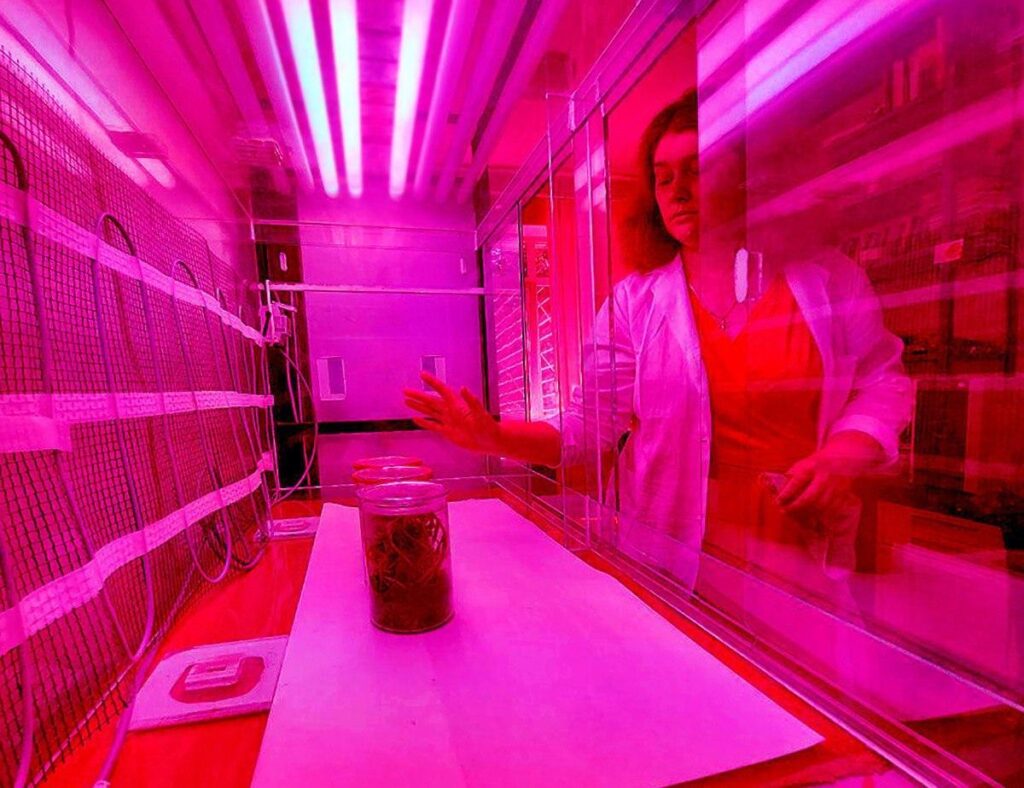
The Path to Future Projects
The designers of the Ukrainian project calculate its cost to be in the region of $280,000. This does not include the launching of a triple CubeSat (which would require an additional approximate $145,000). Almost half of this sum would be spent on creating and testing the actual nanosatellite and preparing the necessary documentation. The biological part of the project does not currently have special funding and the abovementioned experiments in the Botanical Garden are carried out using the existing budget and their own resources.
However, they are looking for additional funding. As of now, SpaceBox has been selected to participate in the Yangel Big Bang competition organized by the State Space Agency of Ukraine, which could help identify investors. KPI is also negotiating with several Chinese universities that can potentially help finance the project. By comparison, the cost of a three-month biological experiment on the International Space Station can range from $145,000 to $430,000. “But this is only for those scientists who represent their respective space agencies and already have equipment on board the Station – the price of which has to be added to the cost of the experiment” explains Dr. Brykov. “But the main issue is that only scientists affiliated with space agencies like NASA or Roscosmos are allowed to perform experiments on the International Space Station.”
If the experiment with the “miniature biosphere” on board the nanosatellite is successful, SpaceBox is ready to offer its platform on a commercial basis to interested clients everywhere because the system can also be used for pharmaceutical research, experiments with 3D bio-printing, testing plants for future space missions as well as the technologies these missions will require.
-Dmytro Simonov
Translated by USUF
Photos: SpaceBox
Українські науковці створюють доступну платформу для біологічних експериментів у космосі, яка може прискорити фундаментальні та прикладні космобіологічні дослідження та наблизити нас до колонізації Місяця й Марсу
Ми вже чимало знаємо про те, як влаштовані живі організми, та як працюють екосистеми. Але що буде, якщо їх перемістити за межі рідної планети, де вони еволюціонували упродовж мільярдів років – на навколоземну орбіту, на Місяць, або на Марс? Туди, де немає гравітації, або вона відрізняється від земної, де інший ґрунт, інший режим освітлення та спектральний склад світла і немає захисту магнітного поля Землі.
Про це ми знаємо незрівнянно менше, але мусимо дізнатися багато, якщо справді плануємо створити постійні поселення на Місяці та Марсі. Там лише штучні екосистеми зможуть забезпечити поселенців їжею та киснем упродовж тривалого часу.
Досі біологічні експерименти в космосі лишаються дуже дорогим задоволенням, а можливість регулярно їх проводити мають лише кілька країн із хорошими позиціями в космосі – США, Китай, Європа, РФ та Японія. Решта гравців на цьому полі – швидше виняток.
Українські науковці заснували стартап SpaceBox, мета якого – зробити біологічні дослідження на навколоземній орбіті значно доступнішими для інших свої колег та бізнесу.
Українська кузня наносупутників
Ідея майбутнього стартапу з’явилася в 2014-му році. Саме тоді група науковців з КПІ ім. Ігоря Сікорського працювала над створенням першого в Україні наносупутника формату CubeSat. Це стандартизовані космічні апарати, що мають вигляд куба з ребром 10 сантиметрів і масою не більше 1,33 кілограми. Завдяки стандратним і компактним розмірам такі апарати запускають по кількадесят одночасно за допомогою ракетоносія, або спеціального пристрою на борту МКС. Таким чином і сам апарат і його запуск коштують дуже недорого за космічними мірками – кількасот тисяч доларів разом, в залежності від устаткування та наукового обладнання. Його, тобто, обладнання, багато не розмістиш на такому мініатюрному супутнику, але розміри апарату можна збільшити – з’єднати між собою два стандартних “куби” (або юніти), три, шість, або дванадцять.
Рік по тому зроблений в КПІ наносупутник PolyITAN-1 успішно вийшов на навколоземну орбіту і досі передає сигнали на Землю, що вважається неабияким успіхом для апарату такого класу. А ще за два роки (тому?) другий апарат PolyITAN-2 в складі міжнародного дослідницького проекту QB50 розпочав дослідження термосфери нашої планети.
Тим часом, наукова група з КПІ під керівництвом Бориса Рассамакіна об’єднала свої зусилля з колегами з Інституту ботаніки ім. М.Г. Холодного НАН України та інших установ і розпочала роботу над CubeSat-ом для біологічного експерименту – PolyITAN-4 (третій супутник із цієї серії також розробляється, але він буде призначений для дистанційного зондування Землі).
Екосистема в банці
Ідея PolyITAN-4 полягає в тому, щоб розмістити всередині «потрійного» CubeSat-а так званий мікрокосм. Що це таке, можна побачити в одній із наукових лабораторій Ботанічного саду ім. М.М. Гришка. Тут у звичайних скляних банках герметично закриті живуть одна або кілька живих рослин. Крім них там є, звісно, ґрунт, бактерії, мікроскопічні гриби і волога. Ззовні надходить лише світло, а також потрібно підтримувати температуру, прийнятну для мешканців банки. Це відносно проста модель природної екосистеми.
Зробити так, щоб вона могла тривалий час сама себе підтримувати без втручання людини та надходження речовин із-зовні – задача зовсім непроста. Але дослідники Ботсаду мають хороший досвід у цьому напрямку – свого часу, одна така екосистема прожила в герметично закритій трьохлітровій банці понад 10 років. Успіх залежить від конкретних видів рослин, які можуть краще або гірше уживатися між собою, грибів та бактерій, які разом із ними потрапили в замкнений простір, субстрату та інших факторів.
Сьогодні в Ботанічному саду завершується 8-місяний експеримент із кількома різними мікрокосмами. Один із учасників проекту, Василь Бриков з Інститут ботаніки розповідає, що разом із колегами вони перевірили 15 видів рослин. Спочатку їх вирощували поодинці в таких ізольованих банках, а потім знайшли комбінацію з трьох, які добре уживаються між собою в спільному просторі. Які саме це рослини, дослідники поки не розголошують.
«Вони почуваються досить непогано в такій замкнутій екосистемі, – розповідає Василь Бриков. – Основний ефект полягає в мініатюризації – їхні розміри в наших експериментах приблизно вдесятеро менші, ніж за звичайних умов».
Експеримент на орбіті
Тепер потрібно перевірити, чи так само добре аналогічна екосистема буде почуватися на навколоземні орбіті.
План наступний. Вчені з КПІ створять спеціальний контейнер, який на борту наносупутника замінить скляну банку. В нього разом із рослинами та субстратом дослідники помістять світлодіоди – червоні, сині та зелені. Це дозволить змінювати характеристики освітлення та опосередковано впливати на температуру внутрішнього середовища.
Подібні наносупутники, очевидно, не здатні повернутися на Землю цілими та неушкодженими, тому всі дані про перебіг експерименту дослідники будуть отримувати дистанційно. Для цього контейнер із живими організмами обладнають монохромними відеокамерами та датчиком концентрації CO2. Саме вони надсилатимуть на Землю найважливішу інформацію про стан екосистеми, наприклад, про те, як відбувається фотосинтез. Крім того, буде датчик радіації та вологості субстрату. Щодо датчика кисню науковці поки що вагаються, оскільки він досить громіздкий, а об’єм камери – лише 800 кубічних сантиметрів.
Автори космічного експерименту сподіваються, що його запуск відбудеться в 2022-му році. Паралельно із ним науковці на Землі будуть спостерігати за мікрокосмом-дублером. Різниця між їхньою поведінкою дозволить краще зрозуміти, як умови на орбіті (в першу чергу мікрогравітація) впливають на рослини та інших мешканців наносупутника. Але головні питання – чи виживе екосистема в космосі, як довго та в якому складі?
«Я хочу щоб ця екосистема прожила на орбіті принаймні три роки – це буде великим досягненням», – каже Василь Бриков.
Подібні проекти
NASA вже провело цикл біологічних експериментів на супутниках стандарту CubeSat, але їхні біологічні об’єкти мали мікроскопічні розміри – найбільшими були спори папороті. А з квітковими рослинами, як це збирається зробити SpaceBox, на таких супутниках ще не працював ніхто.
Та кілька інших проектів також збираються це зробити. Один із них – PlantSat має на меті запустити на орбіту CubeSat із рослиною тілландсією (Tillandsia), відомою своєю витривалістю до складних умов середовища. Його здійснюють науковці із Чилійського університету, а сам супутник робить данська компанія GomSpace.
Інший проект – BiNOM реалізують російські дослідники. Вони створили платформу для біомедичних експериментів у космосі, що розрахована на дослідження бактерій, грибів, рослин та багатокомпонентних систем. Це дещо нагадує SpaceBox, але російська платформа за словами Василя Брикова не розрахована на тривалі експерименти.
Шлях до наступних проектів
Автори українського проекту оцінюють його вартість приблизно у 280 тисяч доларів без врахування ціни запуску (запуск потрійного CubeSat-у може обійтися ще до 145 тисяч доларів). Майже половина цієї суми потрібна для створення і тестування самого наносупутника та підготовки необхідної документації. При цьому біологічна частина проекту наразі не має спеціального фінансування. Це означає, що згадані експерименти в Ботсаду науковці проводять наявними ресурсами та за власний рахунок.
А тим часом вони шукають можливості фінансування свого проекту. Зараз SpaceBox пройшов відбір на конкурс Yangel Big Bang, організований Державним космічним агентством, який може допомогти із пошуком інвесторів. Крім того, КПІ веде перемовини із кількома китайськими університетами, які потенційно можуть взяти участь у фінансуванні проекту.
Вартість біологічного експерименту, що триває три місяці на борту МКС, для порівняння, коливається в межах від 145 до 430 тисяч доларів.
«Але це лише для тих науковців, які представляються свої космічні агентства і вже мають устаткування на МКС, витрати на яке треба додати до вартості експерименту, – пояснює Василь Бриков. – Але найголовніше, що на МКС можуть робити експерименти лише науковці, пов’язані з космічними агентствами, такими як NASA чи Роскосмос».
Якщо експеримент з «маленькою біосферою» на борту наносупутника виявиться вдалим, SpaceBox готовий пропонувати на комерційній основі свою платформу для зацікавлених клієнтів з усього світу. Серед іншого, тут можуть проводитися фармацевтичні дослідження, експерименти з 3D-біодруку, тестування рослин для наступних космічних місій та технологій, які для цього потрібні.
Дмитро Сімонов

